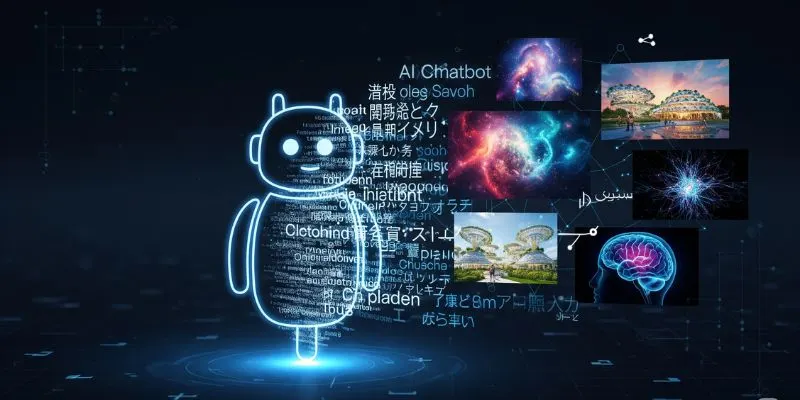What Is Qwen-Image and Why Is Everyone Talking About It?
In a space crowded with AI image generators, Alibaba’s new Qwen-Image stands out for one groundbreaking reason: it can finally render complex, multilingual text in images accurately and reliably. For years, creative professionals, designers, and developers have faced endless frustration: ask any previous model to put real text—especially non-English—on a shop sign, poster, or UI mockup, and the output turned out garbled or laughably incoherent.
Qwen-Image transforms this landscape. Unveiled in August 2025, this 20-billion parameter Multimodal Diffusion Transformer doesn’t just slap characters onto pictures—it understands how human language and visual context intertwine, bringing a level of sophistication rarely seen in this field.
How Does Qwen-Image Solve the “Text Problem” in Image Generation?
Qwen-Image’s true claim to fame is its superior text rendering. It delivers:
Paragraph-level and multi-line layouts: Generate everything from official letters and banners to multiline signage, with accurate formatting and spacing.
Fine-grained details: Handles tiny footnotes, glossaries, or long-form handwriting on objects (yes, over 150 characters!).
Multilingual output: Excels in both alphabetic (English) and logographic (Chinese) scripts, without sacrificing typographic quality.
Semantic context awareness: Unlike models that jumble random words, Qwen-Image ensures text is meaningful and visually consistent, including genre-specific styles (calligraphy, hand-drawn, or modern font).
This text mastery is validated by topping benchmarks like LongText-Bench and ChineseWord, often by large margins, and setting new standards in structured layout and dense text scenarios where even the best models floundered before.
Why Is Open-Source Qwen-Image a Game Changer for Developers and Startups?
Perhaps the most disruptive aspect of Qwen-Image is its open-source release under Apache 2.0. Here’s why that matters:
Unrestricted use: Unlike proprietary systems requiring pricey subscriptions or special licenses, Qwen-Image can be freely used, modified, and integrated into commercial applications.
Runs on off-the-shelf hardware: Thanks to clever optimizations (like DFloat11 quantization and CPU offloading), startups and indie devs can deploy Qwen-Image on a single RTX 3090 GPU, not just in research data centers.
Lowered innovation barriers: No more waiting for features from a vendor—customize, fine-tune, or remix to your heart’s content, and collaborate with a global OSS community.
Practical for sensitive or specialized deployments: For businesses needing control, privacy, or deployment in regulated markets, open weight models like Qwen-Image provide a true alternative to closed “black boxes.”
How Does Qwen-Image Stack Up Against GPT-Image, FLUX, and Other Top AI Models?
Qwen-Image is not only the top open-weight model on the public AI Arena Leaderboard, it often outperforms (or matches) high-profile commercial tools like GPT-Image 1, FLUX 1.1 Pro, and Midjourney in critical areas such as text rendering and editing. Key performance points include:
General Image Generation: Top results in GenEval and DPG benchmarks—prompt accuracy, object fidelity, and scene coherence rival the big names.
Text Rendering Specialization: Unprecedented clarity for dense, layout-sensitive scripts in both English and Chinese, outshining even Ideogram 3.0 and Seedream 3.0 on their home turf.
Advanced Image Editing: Fine control for style transfer, object insertion/removal, detail sharpness, and human pose adjustment—think next-gen Photoshop with AI brains.
Accessibility and Speed: Local deployment means no image quotas, subscription fees, or data privacy headaches—just code, run, and create at will.
Where Can You Try Qwen-Image and What Can You Actually Build With It?
Ready to put this new engine through its paces? Qwen-Image is available right now on major artificial intelligence (AI) platforms, including Hugging Face, GitHub, ModelScope, and even through an interactive demo at Qwen Chat. Try real-world scenarios like:
Marketing images and promotional materials that need tight typographic control.
UI/UX mockups with native-language buttons and instructions.
Bilingual signage, travel guides, or government forms with strict formatting needs.
Custom image editing, from adding objects to translating street signs in sci-fi concept art.
With low hardware requirements and unrestricted licensing, creators from indie devs to Fortune 500 teams are already experimenting with this new creative toolset.
What’s Next for Visual AI—and How Will Qwen-Image Shape the Landscape?
Qwen-Image represents a significant shift—both technologically and strategically—for the entire AI community. As more open-source models push the boundaries of visual understanding, expect rapid new use cases: smarter content creation tools, multilingual interface builders, real-time digital signage, and much more.
The “text in image” problem feels, for the first time, like it’s actually solved. That’s not just a technical milestone—it’s a creative one. And for developers, designers, and founders looking to push what’s possible with AI, Qwen-Image is the tool to watch.














